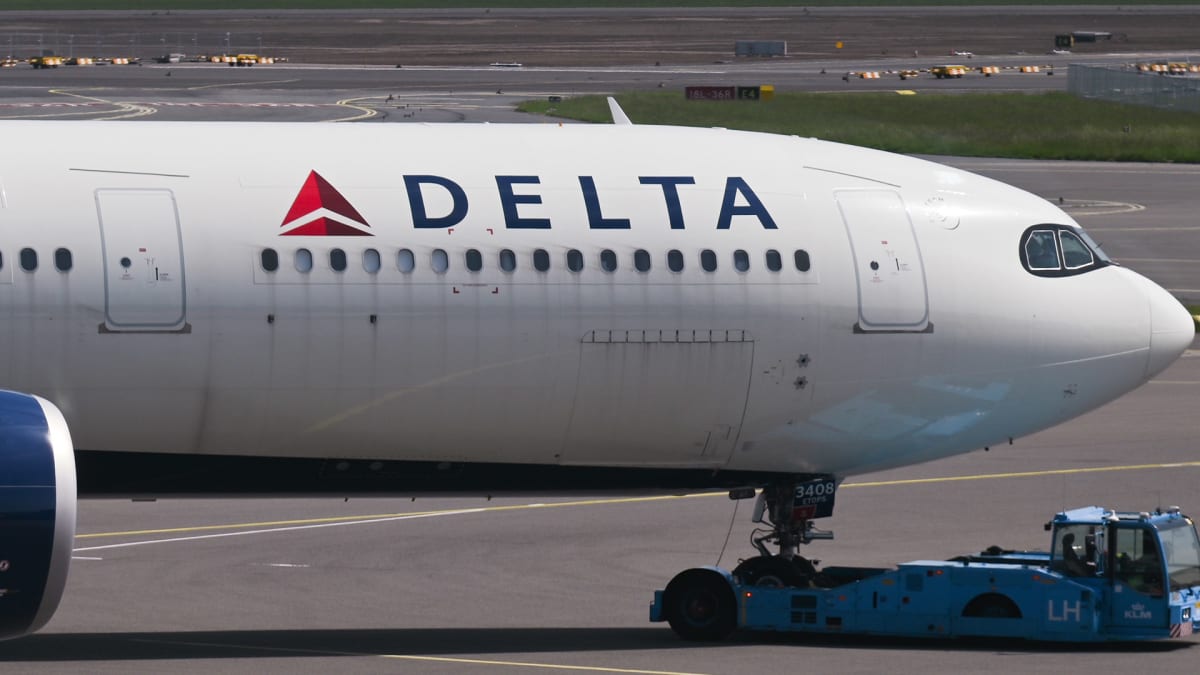
Along with "snakes" and "emergency water landing," the word "fire" is one that travelers definitively do not want to hear while on a flight. Repeated surveys find that mid-air fires are a common fear not just among passengers but also pilots.
Recently, a Delta Airlines (DAL) flight headed from Edinburgh to New York had to make an emergency landing just 60 miles from the departure airport. Passengers aboard flight DAL209 reported seeing flames engulf one of the Boeing 767-300 (BA) wings and started taking pictures and videos.
A Wing Catches Fire Just After Takeoff
Laura Pettigrew is a BBC journalist who was aboard the Feb. 10 flight when the emergency situation arose. She, along with all the other passengers on the board, soon found themselves being brought down to Prestwick Airport in Glasgow in an emergency landing.
"The plane took off and there was a loud engine noise, similar to the noise normally during take-off and landing, but it seemed to continue once we were in the air," she told her publication. "[...] When the plane touched down we could see fire trucks and firefighters with hoses rushing towards us."
A Delta spokesperson confirmed to media outlets that the flight was "safely diverted to Glasgow Prestwick Airport after a mechanical issue with one of the aircraft's two engines."
While the photos coming out from the incident were extremely dramatic, everyone aboard the flight was able to get off and the fire was put out without any injuries. Fire crews arrived on the scene while travelers were evacuated and rerouted on different flights within the next day.
This Is Also A Common Cause Of Mid-Flight Fires
While the Delta incident was caused by an engine fire, a far larger number of plane fires are caused by the lithium batteries that passengers carry with them in objects like laptops and vaping devices.
The Federal Aviation Administration reported 57 "lithium battery related events" last year resulting in "smoke, fire or extreme heat." The constrained environment aboard a plane can make them particularly dangerous.
On Feb. 7, a United Airlines (UAL) flight from San Diego to Newark was forced to reroute back to its point of a departure after the battery in a passenger's laptop caught fire and erupted in a cabin fire. Four flight attendants suffered injuries before the fire could be put out and the flight could take off again.
"Our crew acted quickly to contain the device and medical personnel met the aircraft upon arrival at the gate," a spokesperson for United said in a statement to the media. "Several flight attendants were taken to the hospital as a precaution and two customers were evaluated on site."
Products containing lithium batteries are already banned from being placed in checked baggage. According to the Transportation Security Administration (TSA), these include many common items such as "power Banks, cell phone battery charging cases, rechargeable and non-rechargeable lithium batteries, cell phone batteries, laptop batteries, power banks, external batteries, portable rechargers."
All of these must be taken aboard in one's carry-on and, while the risk is comparatively low given how many are brought aboard each day, they are the common cause behind the cabin fires that do occur. Overall, the FAA reported 414 in-flight safety incidents involving lithium batteries taking place between 2006 and 2022.







